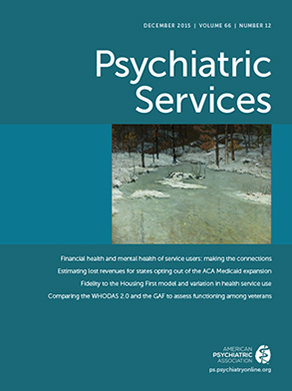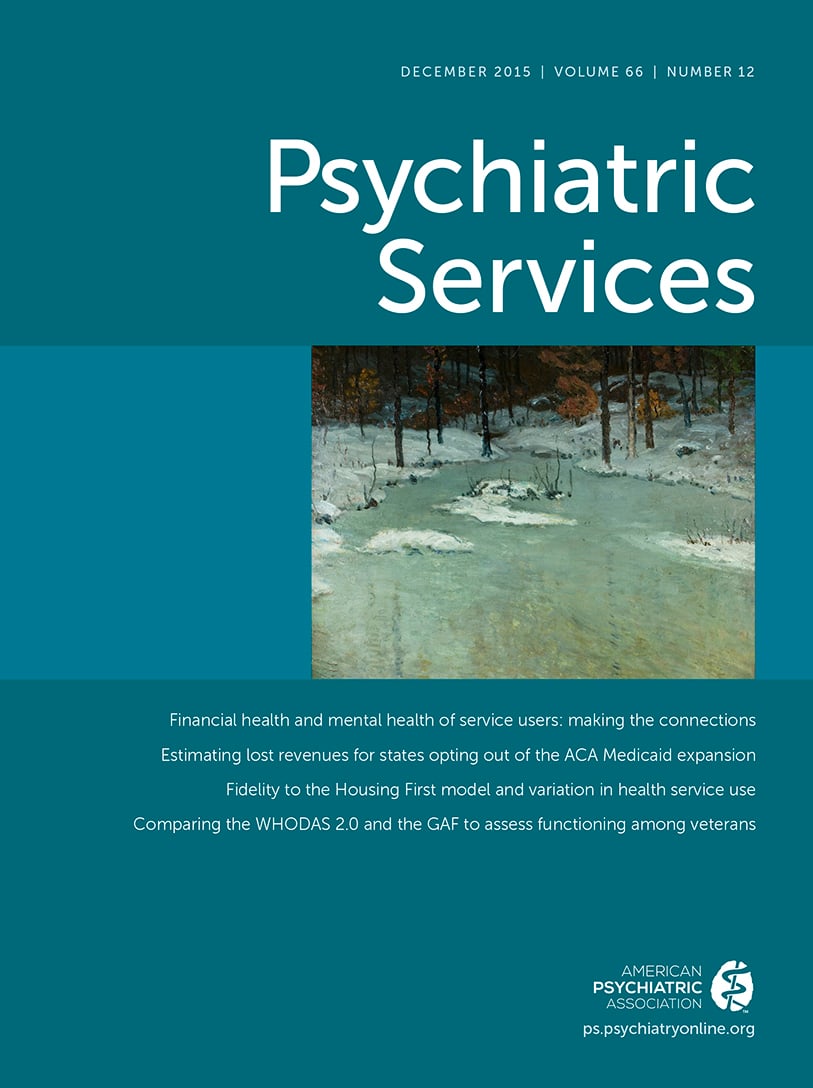IOM assesses sustainability of SSI benefits program for children: Since 1975, children with disabilities in low-income households have received Supplemental Security Income (SSI) benefits. In 2013, approximately 1.8% of U.S. children (1.3 million) received these benefits. About half of these children were disabled because of a mental disorder, a proportion that has grown since 1985, raising concerns about the sustainability of the SSI child program. As a result, the Social Security Administration asked the Institute of Medicine (IOM) to examine trends in the prevalence of mental disorders among U.S. children and in the SSI child disability population.
Mental Disorders and Disabilities Among Low-Income Children presents findings of the IOM committee, which conducted a review of 2004–2013 national trends for all causes of disability and for ten major mental disorders. The committee concluded that, overall, the likelihood that an SSI application was allowed on the basis of a mental disorder decreased from 2004 to 2013, as did the proportion of disability allowances for the ten major mental disorders. Generally, each year, the number of suspensions, terminations, and transitions out of the program at age 18 was less than the number of allowances and “reentries” from suspension, leading to the increased number of total recipients. The committee’s prevalence findings underlined the strong relationship between poverty and child disability, especially mental disorders. However, neither the total number of child mental disorder SSI benefit allowances nor the rate of allowances among children in poverty increased during 2004–2013—a decade that saw a large increase in the number of U.S. children living in impoverished households. Instead, in 2013 the total number of SSI benefit allowances was approximately 10% lower than in 2004. The 451-page report is available on the IOM Web site (
www.nap.edu/download.php?record_id=21780).
AHRQ reviews interventions for disruptive behavior: A new publication from the Agency for Healthcare Research and Quality (AHRQ) systematically reviews 84 studies (66 assessing psychosocial interventions and 13 assessing pharmacologic interventions) published since 1994 for evidence of the effectiveness of psychosocial and pharmacologic treatments for children with disruptive behavior disorders. This group of related disorders is marked by temper tantrums, interpersonal aggression, and defiance that cause behavioral problems at home and at school and increase the risk of negative developmental outcomes, including substance abuse problems, school dropout, and antisocial or criminal behaviors in adolescence. The studies provided consistent evidence that multicomponent interventions (both child and parent components) and interventions that include only a parent component resulted in significantly greater improvement in parent reports of child disruptive behavior, compared with control groups. Few of the pharmacologic studies, which evaluated the effectiveness of antipsychotics, antiepileptics, and stimulants, directly supported the effectiveness of pharmacologic interventions; small studies of antipsychotics and stimulants reported some positive effects in the very short term. No studies examined the effectiveness of psychosocial and pharmacologic interventions in combination. The 250-page review,
Psychosocial and Pharmacologic Interventions for Disruptive Behavior in Children and Adolescents, is available on the AHRQ Web site (
www.effectivehealthcare.ahrq.gov/search-for-guides-reviews-and-reports/?pageaction=displayproduct&productID=2133).
Kaiser Foundation’s annual survey shows record increases in Medicaid enrollment: The Affordable Care Act’s (ACA’s) Medicaid expansion resulted in record increases in Medicaid enrollment and spending in fiscal year 2015. Both enrollment and spending rose an average of nearly 14% nationwide, according to the 15th annual 50-state Medicaid budget survey by the Kaiser Family Foundation’s Commission on Medicaid and the Uninsured. Large differences between states were found. The 29 states expanding Medicaid in fiscal year 2015 reported enrollment and total Medicaid spending growth nearly three times the rates seen in nonexpansion states. Adults newly eligible for Medicaid, whom federal financing covers at 100%, were the primary driver of growth in expansion states. In expansion states, enrollment rose 18%, with a 17.7% increase in total Medicaid spending (federal and state shares) and a 3.4% increase in the state share. In nonexpansion states, by contrast, the state share of Medicaid spending increased 6.9%—higher than the growth rate for total Medicaid spending in those states (6.1%). In nonexpansion states, enrollment grew an average of 5.1%, an increase largely attributable to greater participation of previously eligible parents and children. The survey of state Medicaid directors also examined Medicaid policy and program changes across the country. Findings indicate that 48 states are using some form of Medicaid managed care. Thirty-seven states have adopted or expanded payment and delivery system initiatives, such as patient-centered medical homes, accountable care organizations, and health homes, in order to control costs, reward quality, or coordinate care. Key priorities in the coming year for most Medicaid directors are implementing ACA coverage provisions, controlling costs, and setting up new systems to support program operations. Emerging priorities noted by the directors include population health and social determinants of health. The 83-page report,
Medicaid Reforms to Expand Coverage, Control Costs and Improve Care: Results from a 50-State Medicaid Budget Survey for State Fiscal Years 2015 and 2016, and related materials are available on the Kaiser Web site (kff.org/medicaid). A related Kaiser issue brief provides new estimates of eligibility for ACA coverage among the uninsured. According to the analysis, nearly half (49%, or 15.7 million persons) of the 32.3 million nonelderly persons in the United States who were without health insurance at the beginning of 2015 were eligible for Medicaid or subsidized coverage through an ACA marketplace. The proportion of the uninsured population eligible for those two forms of financial assistance ranged from 35% in Nebraska and Texas to 75% in West Virginia, according to the analysis (
kff.org/uninsured/issue-brief/new-estimates-of-eligibility-for-aca-coverage-among-the-uninsured).
Updated FAQs on ACA marketplaces: As the third annual ACA open enrollment period began, the Kaiser Family Foundation updated and expanded its searchable collection of nearly 300 frequently asked questions (FAQs) about the ACA and insurance marketplaces. Designed to help consumers and the navigators, brokers, and others who assist them, the FAQs cover a wide range of topics, including eligibility for subsidies, the individual mandate to maintain health coverage, and information about health plans offered through state ACA marketplaces. The FAQs also address situations affecting young adults, women, early retirees, immigrants, and people with job-based health plans. The updated collection reflects 2016 changes in the individual mandate tax penalty, standards for affordable health plans, and eligibility for marketplace subsidies. New FAQs also describe tax forms consumers may encounter, rules for auto-renewing marketplace coverage, and tips for the self-employed and other consumers with variable incomes, who may be asked by the marketplace to provide additional income verification. The FAQs are available on the Kaiser Foundation Web site (kff.org/health-reform/faq/health-reform-frequently-asked-questions).
Commonwealth Fund launches Transforming Care newsletter: A new quarterly online newsletter from the Commonwealth Fund,
Transforming Care: Reporting on Health System Improvement, will focus on new models of care, payment approaches, and patient engagement strategies reshaping the delivery system to better meet the needs of the sickest and most vulnerable patients. The newsletter is intended to be a source of innovative ideas for health system leaders, clinicians, and policy makers. The inaugural issue on paying physicians for value-based care examines efforts to align physician incentives with the goals of health systems and provider groups that have entered into contracts with insurers that reward them for delivering high-quality, cost-effective care. Lessons learned by organizations that have sought to tie value-based contracting to value-based pay for physicians are described, including how to prioritize and streamline the many measures that payers use to define quality and value and how to deploy nonfinancial incentives to motivate behavior. A Q&A feature, “Reforming Physician Incentives—A Round-Up of Expert Views,” examines related issues, such as making measures meaningful and engaging physicians in incentive programs. The final section of the inaugural issue, “Publications of Note,” provides summaries and links to recent relevant publications, both research studies and commentaries, chronicling ongoing transformations in health care delivery.
Transforming Care is available on the Commonwealth Fund’s Web site (
www.commonwealthfund.org/publications/newsletters).
APA members invited to join a new APA advocacy network: The Congressional Advocacy Network (CAN) is a new initiative of the American Psychiatric Association’s (APA’s) Division of Government Relations. CAN is designed to help develop, train, and energize a national network of psychiatrists to communicate and build personal relationships with members of Congress and speak on behalf of APA on issues related to mental health and the profession of psychiatry. Under the new initiative, APA’s political action committee, APAPAC, will appoint a psychiatrist from each state to act as a Federal Advocacy Coordinator (FAC). These FACs will name psychiatrist members in their states as Congressional Advocates and pair them with members of Congress in each congressional district and with U.S. Senators. APA’s Department of Government Relations will help Congressional Advocates to build relationships with members of Congress. Members interested in participating in CAN should contact Ashley Mild at
[email protected] and Adam Lotspike at
[email protected] of APA’s Division of Government Relations.
HUD releases tool kits on strategies to end veteran homelessness: The U.S. Department of Housing and Urban Development (HUD) has developed four tool kits to help service providers reach the goal of ending homelessness among veterans. The tool kits identify best practices, key strategies, action items, and considerations for Department of Veterans Affairs (VA) partners and local public officials that can be implemented immediately. Each tool kit includes a section for mayors and elected officials with methods and action steps, as well as lists of resources, documents, and links to key Web sites highlighting best practices. The four tool kits are “Identifying and Engaging Veterans Experiencing Homelessness,” “Effective Homeless Crisis Response Systems for Veterans,” “Connecting to Permanent Housing,” and “Housing Stability.” The tool kits are available on the HUD Exchange (
www.hudexchange).
CIHS newsletter highlights integrated treatment plans: The latest issue of the
eSolutions newsletter of the Center for Integrated Health Solutions (CIHS) focuses on the integrated treatment plan, calling it the “blueprint to success” in delivering effective integrated care. The lead article describes key considerations in creating and maintaining integrated treatment plans and provides links to samples of “holistic” initial patient assessment forms that lay the groundwork for integrated plans. The newsletter also links to the Integrated Treatment Tool, a planning and evaluation instrument that measures 13 organizational characteristics, ten treatment characteristics, and seven care coordination–management components and is used by the Center for Evidence-Based Practices at Case Western Reserve University to help organizations plan and evaluate the ongoing process of implementing integrated primary and behavioral health care treatment plans. The
eSolutions newsletter is available on the CIHS Web site (
www.integration.samhsa.gov/about-us/e-solutions).

